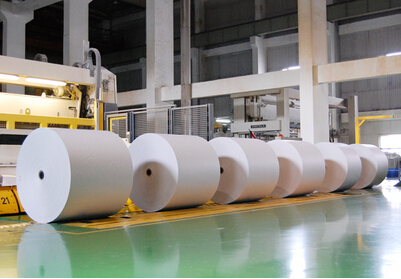Polyacrylamide (PAM) is widely used in the papermaking industry for various applications. One of its primary uses is as a retention and drainage aid, which improves the efficiency of the papermaking process.
PAM can also be used as a flocculant, which helps to separate suspended particles from the pulp, improving the quality of the final product. Polyacrylamide (PAM) is a widely used flocculant in the papermaking industry. It is employed as a retention and drainage aid during the papermaking process to improve the efficiency of the paper machine and enhance product quality.PAM is a water-soluble polymer that can be synthesized via free radical polymerization of acrylamide monomers. The resulting polymer has a high molecular weight and exhibits strong water-absorbing and flocculating properties, making it an ideal choice for use in papermaking.During the papermaking process, PAM is added to the pulp slurry to promote the aggregation of fine particles and fibers into larger, more easily filtered entities. This improves the overall dewatering and retention properties of the pulp, resulting in a more efficient and cost-effective production process.
In addition to its role as a flocculant, PAM can also serve as a dispersant, helping to prevent excessive agglomeration or clumping of pulp fibers. which helps to prevent agglomeration of fibers and other materials during processing. Overall, PAM is an essential component in modern papermaking, helping to improve efficiency, quality, and cost-effectiveness.
Polyacrylamide (PAM) is a widely used dispersant in the paper-making industry due to its excellent dispersing properties. PAM can effectively disperse and stabilize pulp fibers, fillers, and other additives in the paper-making process, thus improving the quality of paper products.In the paper-making process, PAM is added to the pulp slurry to improve the retention rate of fine fibers and fillers, reduce the loss of fiber and filler materials, and increase the strength and smoothness of the paper. PAM can also effectively reduce the consumption of other chemicals in the paper-making process, such as alum, rosin, and starch.
Moreover, PAM can help to improve the efficiency of paper machines by reducing the deposition of impurities on the machine parts and minimizing the frequency of machine shutdowns for cleaning. This leads to increased productivity and reduced maintenance costs.
Overall, the use of PAM as a flocculant and dispersant in papermaking has become increasingly widespread due to its effectiveness, versatility, and ease of use. As the demand for high-quality, sustainable paper products continues to grow, PAM is likely to remain an important tool for manufacturers seeking to optimize their production processes and meet evolving market demands.
In conclusion, PAM is an essential component in the paper-making process that provides numerous benefits, including improved paper quality, reduced chemical consumption, and increased production efficiency.
Polyacrylamide (PAM) is a versatile polymer that has a wide range of applications in various industries. In the papermaking industry, PAM is widely used as a retention and drainage aid, which improves the efficiency of the papermaking process. When added to pulp, PAM can improve the retention of fine particles and fibers, reducing the amount of solid waste generated during production. Additionally, PAM can help to improve drainage by increasing the rate at which water is removed from the pulp, resulting in faster drying times and higher production rates. PAM can also be used as a flocculant, which helps to remove suspended particles from the pulp, leading to a cleaner final product. Overall, PAM is an essential component in modern papermaking, helping to improve efficiency, quality, and sustainability.







